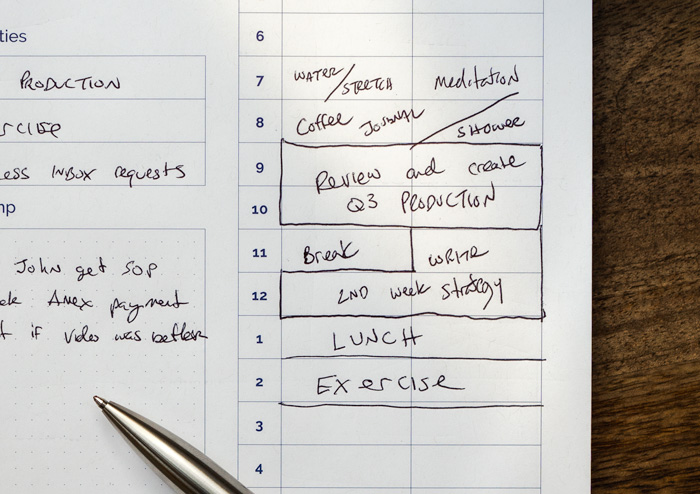Structure for Skyie Parts to work.
Most productive advice is assumed that once you keep time aside, you will work. But the focus is not like this.
Even despite the flawless calendar, our brains still look for escaped hatches. This is the place where Pomodoro technique becomes invaluable. Instead of just managing time, it is in accordance with the natural energy locks of your brain.
→ → This is a structured approach to stay on track.
At the time we sit, our digital world begins to draw wire. Suddenly, we “Just needed” To check one thing, see a clip, skim off an article. Before we know it, we’ve just done 20 minutes of using the Internet Wants to We have to use. This is not an accident – it’s an algorithm. If you have ever thought your recommendations feel easily appropriate to steal your time, you need to clean up you Algorithm hygiene (How is here).
We live in the period of engineered disturbances, where something interesting, anger .They is always at a distance of a couple of clicks. Even among us most discipline struggles to make real progress on these tasks.
Pomodoro techniques offer a straightforward way to counter these disturbances – and it works.
25 minutes of pomodoro work cycle

In its core part, Pomodoro techniqueCreated by Francisco SerilloWhen you work through any work, we have a planned approach to budgeting energy and attention. Instead of charging a project and expecting the best, Pomodoro’s procedure instructs us to break his work in twenty -five minutes (alias, “pumodoros”, named after the tomato -shaped kitchen timer, which affected the process).
These interval sessions are broken by a short period of five minutes, designed to fill, spread and reduce our energy between efforts to help us to accelerate ourselves. Applied, this intelligent process not only eliminates the seemingly ended assignments into managed pieces, but in reality it trains us more productive and discipline in this process.
Let’s take a step at one step at a time – in action.
Pomodoro set
Pomodoro technique is not a tactic – this is a strategy. Sitting for a 25 -minute interval uninterrupted, he will not help if we have a compulsory meeting in ten. The purpose of Pomodoro is not just to complete the projects-it is to take the initiative and regenerate its minds for consistency. That is why every good set needs to be started …
Step 1: Preping and Planning
The first step to implement this technique should be to estimate how many Pomodoro sessions are being taken. Although some couples may be tried to assess the need for the need, we will improve with exercise (and we have to accelerate our estimation skills in the process – a terrific skill that can be applied to almost everything).
If we estimated A Client onboarding workflow We will take six pumodoros, we need to plan these bursts of production during your working day times when we are most likely to get disturbances (high volume times in the office, when children go home from school, etc.).

Two work sessions may need to run with the first thing in the morning through lunch after lunch. We need to separate our real important tasks from the things we can assign or delay (Use of tools such as Eisenhower Matrix or just colored tagging inside a productivity suit).
Schedule set? It’s time to start.
Step 2: Work for twenty -five minutes
After installing a timer for twenty -five minutes, work begins. Work, nothing else. We should not behave like it as a race against the clock (for example, we should not check our pomodoro timer at all) and we should not try to hurry. These sessions are meant to complete the maximum concentrated task – if we start sacrificing quality for quantity, we have lost this point.
The beauty of Pomodoro techniques comes from taking advantage of the methods of scientifically proven to conquer difficult tasks. Thanks to the Skyishi lying machines within our skulls, it is easy to start and follow six small promises, to do more than that, even if it is the same amount of work.
Although some Pomodoro followers suggest timer to work in the past. If you think you have targeted your success, our recommendation is to stick to the timer.
Remember, Pomodoro techniques are a means of training ourselves when we need, not when we feel so.
Step 3: Break for five minutes

As soon as our first work session is over, set the timer for five minutes. During this interval, we should put the project aside and give our minds a chance to recharge.
Take a break in the bathroom constantly. Listen to some music or test the texts and emails that are coming. We should be careful, however, allowing enough time to recover, while not allowing ourselves enough time to get involved in something else.
Not only do these regular intervals help us to accelerate ourselves – they give us the opportunity to travel some distance between ourselves and our plans, let us see our work from a new point of view and prevent us from getting stuck in the routes (when we are working on creative works such as writing or design).
Step 4: Repeat for three more 25 minutes of pomodoro session, then long break
Immediately with our 5 -minute break. Later, we need to dive again in this project-once again worry about a project without focusing specially on doing our best for our best, permanent period.
After the completion of three more pomodoros (we give us a total of four), our fourth interval should increase for twenty minutes-allowing us to further fully mobilize and solve any duties that cannot be addressed during our short intervals. After that, the rest of our periods should return in five minutes to the next four sessions.
We have spoken of this energy before, not time, is the currency we spend to meet anything but it is capable of repeating here. Trying to do everything together is just sure that we will do nothing – at the same time promoting bad habits, mental fatigue and eventually disappear. Pomodoro techniques allow us to do our best without improving this task.
But it doesn’t stop there …
Single or more than one job
The negative aspect of any simple process is sorting hundreds of variations around them, and Pomodoro techniques are not exempt. After almost fifty years of use around the world, we will face the principles of sports here in almost every sector and situation. And while the infrastructure of Pomodoro is stable, the way people use it.
A permanent question:
Can we use Pomodoro techniques in a multi -task?
That, or some changes on it. Can we mix pumodoros? If we are good enough to use principles, should we keep focusing on one thing at a time or try to handle more?
Finally, it will depend on the individual to make a decision. If someone wants to dedicate twenty -five minutes to the data entry, then jump to exit voluntarily, this is the choice they can make. This is not one, however, we will recommend.
Remember that pumodoro technique is not just a means to meet the task, it is a way to train yourself in focus and follow. Life, sooner or later, will present us with such a large or so complex problems that they will need our full attention. When those challenges go towards us, we need to be prepared to meet them with our full concentration.
Adaptation and substitutes
For the sustainable popularity of all Pomodoro’s techniques, for all the subjects praising it, the only thing is to be important.
Working it for us.
There is never a single solution or all the formulas of one -sized formula, and the maximum benefit from the principles is to be tried and mistaken. The magic of this technique is not in the twenty -five minutes of sample, but is in teaching ourselves to find a rhythm that we will re -reproduce. When we apply this process, we need to keep in mind the extent to which we keep the attention before we are suffering, how much break we need to maintain the quality, and how many we can rotate in Pomodoros before we need extended rest. Maybe we are better Desktime change (Working 52 minutes, resting 17 minutes) or Ultradin (90 minutes) Work cycle.
Or we may know that by connecting Pumodoro AI scheduling assistant like movement Or such as blocking tools over time Ashes Overall gives us a better explanation throughout the day.
Regardless of our final decision, the truth remains: The best way to work for any technique is to make it your own. Adjust the experience. Experience again. What works and crush the tasks that our schedules.
Modern techniques for time tracking
Official Pomodoro Techniques offers homepage A simple timer without disturbing.
Pomodoro apps
The simplicity of the phone timer is good, but when our intervals are limited to five minutes or less, a dedicated app can prevent us from punching new numbers in every cycle and can save us from the temptation to scroll through our messages. For iPhone and Mac users, there is befocused (Free with advertising) and Bofocyz Pro (for 99 2.99). For Android, check Pay attention to work (Free, with additional features addditional extra purchase).
Todoast

Organization web app Todoast Makes work with the option of using its built -in Pomodoro properties or customizing our own sample customization (Thanks to their step -by -step tutorial) Those of us who want to add techniques to several areas are an easy way to centralize their efforts.
Productive cubes

We have to say something for a supersh reminder to keep on track, especially if using a timer or app on your phone is a high risk of falling rabbit holes. Enter: Productive cubes – A solid timer is specially developed around the pomodoro technique. In many designs, productive cubes can help our habits by adding a physical ingredient to the work comfortable rhythm of work at affordable prices.
Which tools and time management techniques do you use to complete the tasks on time? Continue the conversation in the comments!
→ Read now:
